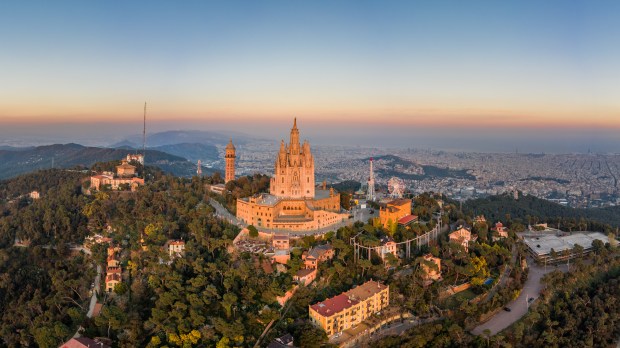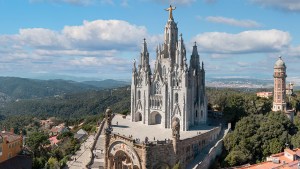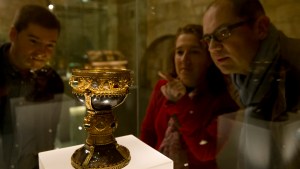The Mount of Temptation overlooks the Judean desert. According to tradition, this is the mountain on which Jesus was tempted by the devil during his 40-day fast. Built into the rock, the Greek Orthodox Monastery of the Temptation of Jesus seems suspended in the air.
The synoptic Gospels (Matthew 4:1-11; Luke 4:1-13; Mark 1:12-13) claim Jesus was led into the wilderness by the Holy Spirit. There, he was tempted by the devil after fasting for 40 days and 40 nights. The devil challenged him three times, tempting him to turn a stone into bread, to throw himself off the mountain, and to accept “all the kingdoms of the world” in return for his allegiance. The text reads:
et dixit illi haec tibi omnia dabo si cadens adoraveris me – “And saith unto him, All these things will I give thee, if thou wilt fall down and worship me” (Matthew 4:9)
et ait ei tibi dabo potestatem hanc universam et gloriam illorum quia mihi tradita sunt et cui volo do illa – “All this power will I give thee, and the glory of them: for that is delivered unto me; and to whomsoever I will I give it” (Luke 4:6).
More than 1,000 feet high (nearly 300 meters), the Mount of Temptation is also known as MountQuarantania, and Jabal al-Qarantal in Arabic. The name derives from the Latin quarantena — “40” — as in the number of days that Jesus fasted. But even if monks and hermits have lived within the caves of the Mount of Temptation since the early days of Christianity, there is another Mount of Temptation, some 5,000 kilometers away, that also claims to be pretty tempting: the Barcelonian Tibidabo hill.
The Tibidabo Hill
The Tibidabo hill overlooks Barcelona. At 512 meters high, it is the tallest hill in the Serra de Collserola, 200 meters higher than the original Mount of Temptation, and it offers great views over the city and the surrounding coastline. The Expiatory Church of the Sacred Heart of Jesus stands on its summit.
The name of the Tibidabo hill derives from the Latin Vulgate Bible verses quoted above: et ait ei tibi dabo potestatem hanc universam et gloriam illorum quia mihi tradita sunt et cui volo do illa; all this power I give thee, tibi dabo.
The origins of the name of Barcelona’s Tibidabo hill are somewhat uncertain, but it seems it dates from the same period in which other places in the region were given biblical names, as in the cases of the Vall d’Hebron and Mont Carmel. A popular explanation is that, in the 17th century, a king (or a nobleman) visited the hill and was shocked by the view (the city, the surrounding villages, the port, and the sea), which reminded him of the aforementioned Gospel passage. Tibi dabo.



